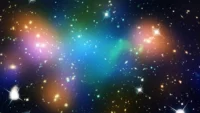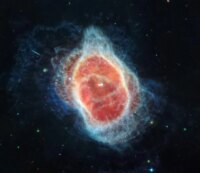Have you ever thought that human cells can also photosynthesize like plants?
Extract “bio-battery” thylakoids from spinach, so that animal cells can also obtain energy through photosynthesis, thereby rejuvenating and reversing the aging and degeneration of cells.
This is not a fantasy, but the latest research results of the Zhejiang University team.
Recently, the team of Dr. Lin Xianfeng and Professor Fan Shunwu from the Department of Orthopedics of Run Run Shaw Hospital Affiliated to Zhejiang University School of Medicine, and the team of Professor Tang Ruikang from the Department of Chemistry of Zhejiang University successfully extracted “thylakoids, a bio-battery with photosynthesis” from spinach.
By wrapping animal cell membranes in the outer layer of nano-sized thylakoids as camouflage, they achieved the cross-species delivery of plant thylakoids to the aging and diseased cells of animals for the first time, so that animal cells can also have the energy of plant photosynthesis.
Senior editors and reviewers of “Nature” magazine also spoke highly of the latest research results of Zhejiang University’s scientific research team, calling it:
Follow the laws of nature, innovatively break through the world problem of delivering energy to cells, and open up the possibility of metabolic engineering.
Read on to see how this research turned the rotten into the magical.
How to Charge Animal Cells
Insufficient intracellular anabolism is a key factor leading to many pathological processes in the body, and the anabolism of intracellular substances needs to consume sufficient intracellular energy and produce reducing equivalents.
ATP acts as the “energy currency” of cellular biological processes, and the reduced form of NADPH is a key electron donor, providing reducing power for anabolism.
But under pathological conditions, it is difficult to correct the anabolism of damaged cells and raise the insufficient ATP and NADPH levels to optimal concentrations.
So the first step in “charging” an animal cell is finding a battery.
Therefore, Lin Xianfeng put forward an idea “Can we design a “charging” device to controllably generate ATP and NADPH in cells? ”
At this time, Tang Ruikang’s team’s chemical biology research ideas and the concept of artificial organelles opened up a new direction for research, and they also turned their attention to nature.
In nature, plants and animals form a perfect complementary relationship. Plants produce oxygen and sugar by absorbing carbon dioxide, while animals do the opposite.
So they thought:
Is it possible to extend this macro-complementary relationship to the cellular level, by implanting photosynthetic organelles to make the plant’s energy supply system a “bio-battery” for animal cells to replenish energy?
In the end, the research team chose to use the energy-supplying organelle thylakoids in chloroplasts as the raw material of the “biobattery”, and obtained thylakoids by purifying spinach extract.
The thylakoid membrane in the chloroplast is the site of the light reaction stage in photosynthesis (Source: Zhejiang University)
Fan Shunwu jokingly said: In the cartoon “Popeye”, eating spinach will make you stronger, and spinach is also the greenest vegetable in the vegetable market, so we chose spinach. Now that there is a battery to supply energy, where is the interface for charging the cells? How to safely and accurately deliver thylakoids to the aging and degenerated cells of animals is the second challenge of this research.
“In order to deliver plant material into animal cells, you need to cheat.”
Team member Chen Pengfei initially tried various delivery methods such as liposome entrapment, but the results were not satisfactory.
Until one day, he thought of whether it is possible to use the cell membrane of the recipient cell itself as a carrier?
Using the principle of homologous targeting, the cells think that the thylakoids we deliver are “our own people”, so as to avoid immune rejection in the body and realize the transplantation of nano-plant thylakoids across borders.
After continuous exploration and exploration, the team successfully disguised nano thylakoids with cell membranes, and realized the intracellular delivery of nano thylakoids.
Liu Xin, a member of the research team and a distinguished researcher at the Biomedical Research Center of Run Run Shaw Hospital, Zhejiang University, said:
The escape of exogenous biomaterials from lysosomes is an important part of successful delivery, and we have repeatedly verified through various endocytosis inhibition experiments that animal cells no longer clear nanothylakoids as ‘foreign objects’, but become part of it .
In order to restore the function of chondrocytes, the research team adopted the emerging cell membrane nano-coating technology:
That is to use mouse chondrocyte membranes to encapsulate nano-sized thylakoids and inject them into damaged cartilage.
At this time, thylakoids are still in a “sleeping state”, and the way to “awaken thylakoids” is naturally light stimulation.
When an external beam of light penetrates the mouse’s skin to the inside of the chondrocytes, the thylakoids kick into action, producing ATP and NADPH.
Light stimulation significantly increased the levels of ATP and NADPH in chondrocytes, and the anabolism of aging cells was also restored.
What’s more, the joint health of the mice was significantly improved.
According to the general assessment method of joint health level, mice with a score of 5 can return to a state of 1.5 after treatment (the higher the score, the more severe the degree of arthritis), and the state of chondrocytes is equivalent to returning from a 60-year-old human. to 20 years old.
Results of the study showed that CM-NTU treatment combined with light irradiation significantly attenuated cartilage destruction (assessed by safranin-O staining) at 8 and 12 weeks postoperatively (Fig. 5b), according to the Osteoarthritis Research Society International (OARSI) score This result was further confirmed.
Mice receiving ACLT and treated with CM-NTU and light had significantly lower scores compared to the ACLT control group (1.45 and 1.81 at 8 and 12 weeks postoperatively, respectively).
The invention patent has been submitted and is expected to be applied in multiple fields. After more than a year of experiments and analysis, the research team has verified that the nano thylakoids can still retain proteins and other functional monomers required for photosynthesis on the thylakoids after entering animal cells.
That is to maintain sufficient action time and degradation stability in the body, and ensure the production of sufficient ATP and NADPH, so as to systematically reverse the metabolic state of diseased cells.
Lin Xianfeng said:
We first seek a breakthrough in the treatment of osteoarthritis. Osteoarthritis is one of the main causes of clinical deformity and disability. It is precisely because of the imbalance of energy metabolism of chondrocytes and the depletion of ATP and NADPH that lead to the destruction of articular cartilage.
Fan Shunwu said in an interview that the team has simultaneously submitted the invention patent and started product transformation.
Because the key raw materials come from natural plants, the safety is very high, and the cell membrane nano-coating technology has the potential for large-scale production. I believe that in the near future, this technology is expected to be applied in many fields.
Professor Francisco Cejudo, a thesis review expert, believes:
What is remarkable about this work is that the research team succeeded in interspecies transplantation of plant miniature organelles into mammalian cells.
The use of the plant photosynthetic system to specifically supply ATP and NADPH in mammalian cells in a light-dependent manner is an exciting achievement that opens up the possibility of metabolic engineering.




GIPHY App Key not set. Please check settings